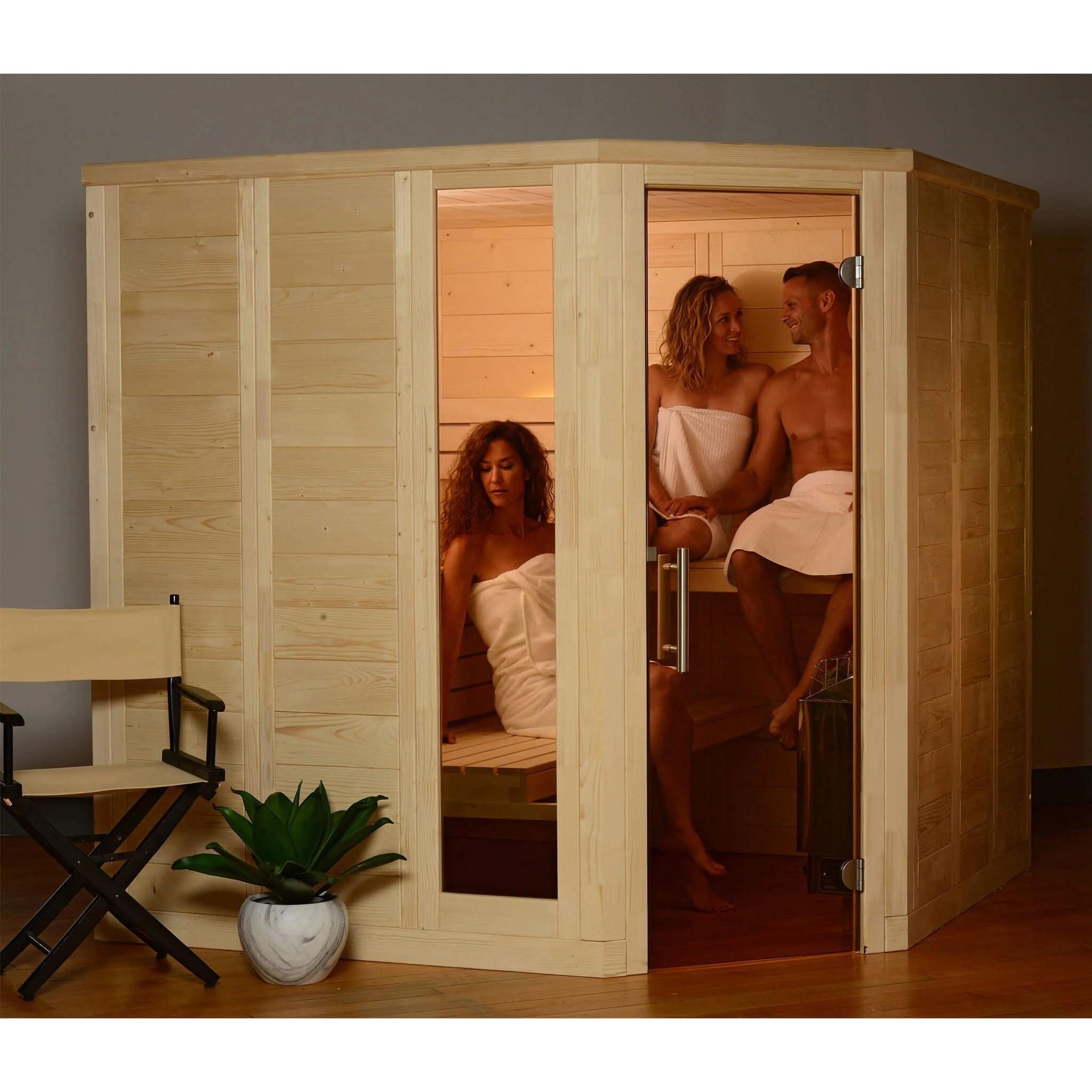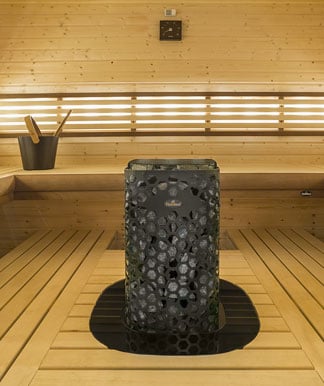The Buzz on Traditional Sauna
The Buzz on Traditional Sauna
Blog Article
Unknown Facts About Traditional Sauna
Table of ContentsTraditional Sauna - QuestionsGetting The Traditional Sauna To WorkThe Ultimate Guide To Traditional Sauna4 Simple Techniques For Traditional SaunaThe Best Guide To Traditional Sauna
A lot of the weight shed in a sauna is water loss and is re-gained upon rehydrating. Without an uncertainty sauna can be a crucial part of a healthy weight loss program. To consider the distinctions in between standard and IR saunas, I will divide these right into proven, academic, and produced differences.Hence, the hottest factor in the saunawhich is at the ceiling directly over the sauna heateris typically in between 185 and 190 F. Claims that a typical sauna exceeds 200 F is simply not real and not appropriate for electrical saunas offered in the United States. The temperature level for a far-infrared sauna is generally established between 120 and 140 F; however, unlike the standard sauna, the goal in and IR area is not to accomplish a high temperature.
Due to the fact that of this, the temperature distinction is almost irrelevant, considering that profuse sweating results in both sauna kinds, but the technique of heating the body is different. In an IR sauna the bather will certainly really feel warm and will sweat profusely, yet at a lot reduced temperature levels (Traditional Sauna). Thus, if the goal is to invest longer time periods in the sauna, the IR sauna is a good option
When a traditional sauna has been effectively heated, the sauna walls are warm, the air temperature has actually accomplished established temperature level and the rocks are super heated. As an intriguing side note, the heated wall surfaces and the rocks are emitting far-infrared warm, incorporated with the heated air, to develop an "enveloping heat".
What Does Traditional Sauna Do?

When the high temperature level is accomplished, the aspects cycle on and off to preserve the high temperature. Most conventional sauna individuals appreciate putting water over the rocks to create steam to elevate sauna moisture levels. The benefits of putting water over the rocks include: making the area more comfy, dampening the nasal passages, and enabling the usage of aromatherapy by blending vital oils with the water.

When the power gets in the body, it creates the body temperature level to boost and inevitably causes sweat. In an infrared sauna it's vital for the emitters/heaters to stay on almost regularly. Considering that there is no mass of rocks to retain warm, the visit this site sauna will certainly cool if the emitters shut down.
As mentioned above, the sauna bather in an infrared area wishes to place himself before running emitters to get optimal gain from the warm. The heating time for both spaces can be really different, relying on exactly how the rooms are made use of. For a typical sauna, a bather must permit 30-40 minutes for the room to achieve a preferred temperature and to properly pre-heat the rocks.
Traditional Sauna Things To Know Before You Buy
A well built sauna will normally achieve a temperature of 150-160 F in concerning 30-40 mins. For hotter temperature levels, the area may need to heat for a longer period. Once the room achieves set temperature level, the heater will cycle on and off, normally operating about 50% of the moment. The protected walls and the heated rocks will certainly maintain the space hot and at steady temperature levels.

Standard saunas tend to be bigger (hence use even more electrical power) than infrared saunas, although traditional saunas are absolutely available in one and 2 person dimensions. For a two-person standard sauna, 5x6 or 5x7 dimension is most popular. The leading bench can conveniently seat 2 or three individuals and is also enough time to relax during the sauna session.
Traditional Sauna Fundamentals Explained
The ordinary price per kWH of electrical energy in the united state is around $0.11, so a 4.5 kW heater will set you back about $.50 sites to run for one hour, if the heating system runs continually for one hour. Usually a sauna heating unit will certainly run for 75% of the initial hour and 50% of subsequent hours on given that the elements cycle once the established temperature level is accomplished.

Finally, there is a seldom reviewed distinction in the social experience in between the 2 rooms. While our society has actually lost some of the social benefit of the standard sauna experience, it can be really socially fulfilling (Traditional Sauna). From household time in the sauna, to heart-felt conversations with considerable others, to sauna partiesthe standard sauna experience can bring about intimate socializing
The 20-Second Trick For Traditional Sauna
Many greater end infrared areas consist of tinted light treatment, noise systems and full-glass fronts.
Report this page